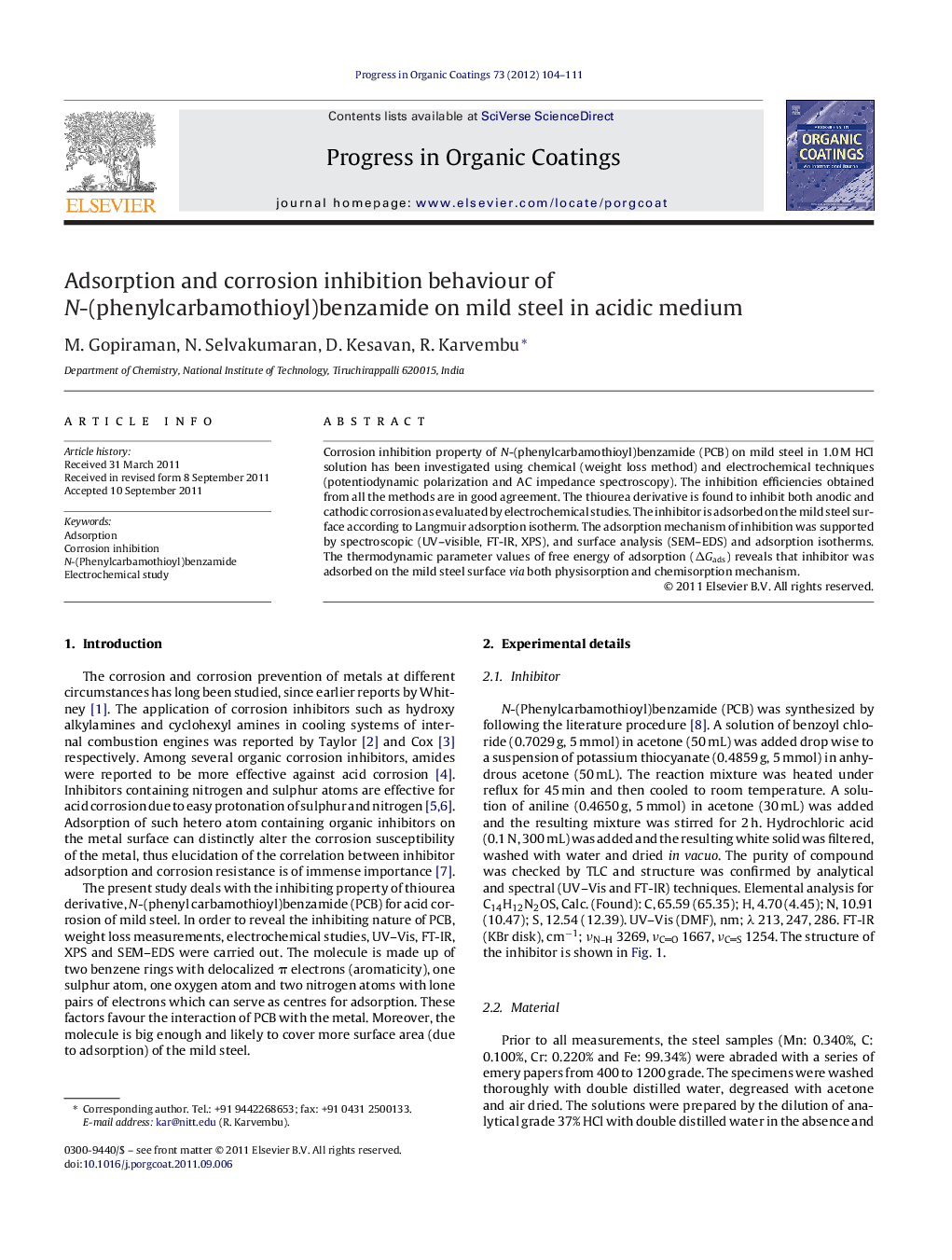| Article ID | Journal | Published Year | Pages | File Type |
|---|---|---|---|---|
| 693360 | Progress in Organic Coatings | 2012 | 8 Pages |
Corrosion inhibition property of N-(phenylcarbamothioyl)benzamide (PCB) on mild steel in 1.0 M HCl solution has been investigated using chemical (weight loss method) and electrochemical techniques (potentiodynamic polarization and AC impedance spectroscopy). The inhibition efficiencies obtained from all the methods are in good agreement. The thiourea derivative is found to inhibit both anodic and cathodic corrosion as evaluated by electrochemical studies. The inhibitor is adsorbed on the mild steel surface according to Langmuir adsorption isotherm. The adsorption mechanism of inhibition was supported by spectroscopic (UV–visible, FT-IR, XPS), and surface analysis (SEM–EDS) and adsorption isotherms. The thermodynamic parameter values of free energy of adsorption (ΔGads) reveals that inhibitor was adsorbed on the mild steel surface via both physisorption and chemisorption mechanism.
Graphical abstractCorrosion inhibition behaviour of N-(phenylcarbamothioyl)benzamide (PCB) on mild steel in 1.0 M HCl solution was investigated using chemical and electrochemical techniques. The adsorption mechanism was studied by UV–Vis, FT-IR, SEM–EDS and adsorption isotherms. The values of ΔGads reveal that inhibitor was adsorbed on the mild steel surface via both physisorption and chemisorption mechanism.Figure optionsDownload full-size imageDownload as PowerPoint slideHighlights► N-(Phenylcarbamothioyl)benzamide exhibits corrosion inhibition property in acidic medium. ► Corrosion inhibition efficiency has been studied using weight loss, polarization, electrochemical impedance spectroscopy, adsorption isotherms and SEM–EDS. ► Adsorption of the inhibitor on the mild steel surface obeys the Langmuir's isotherm.
